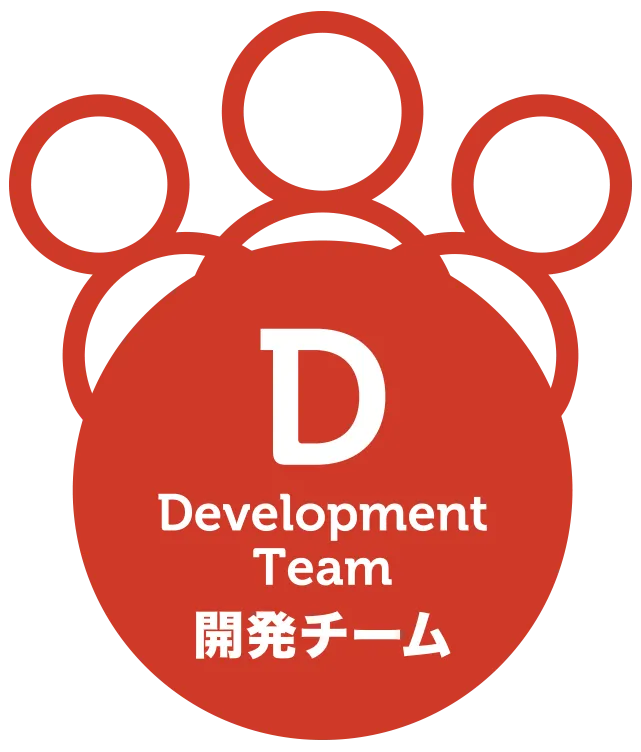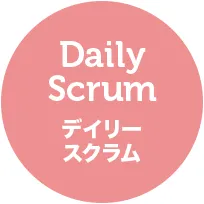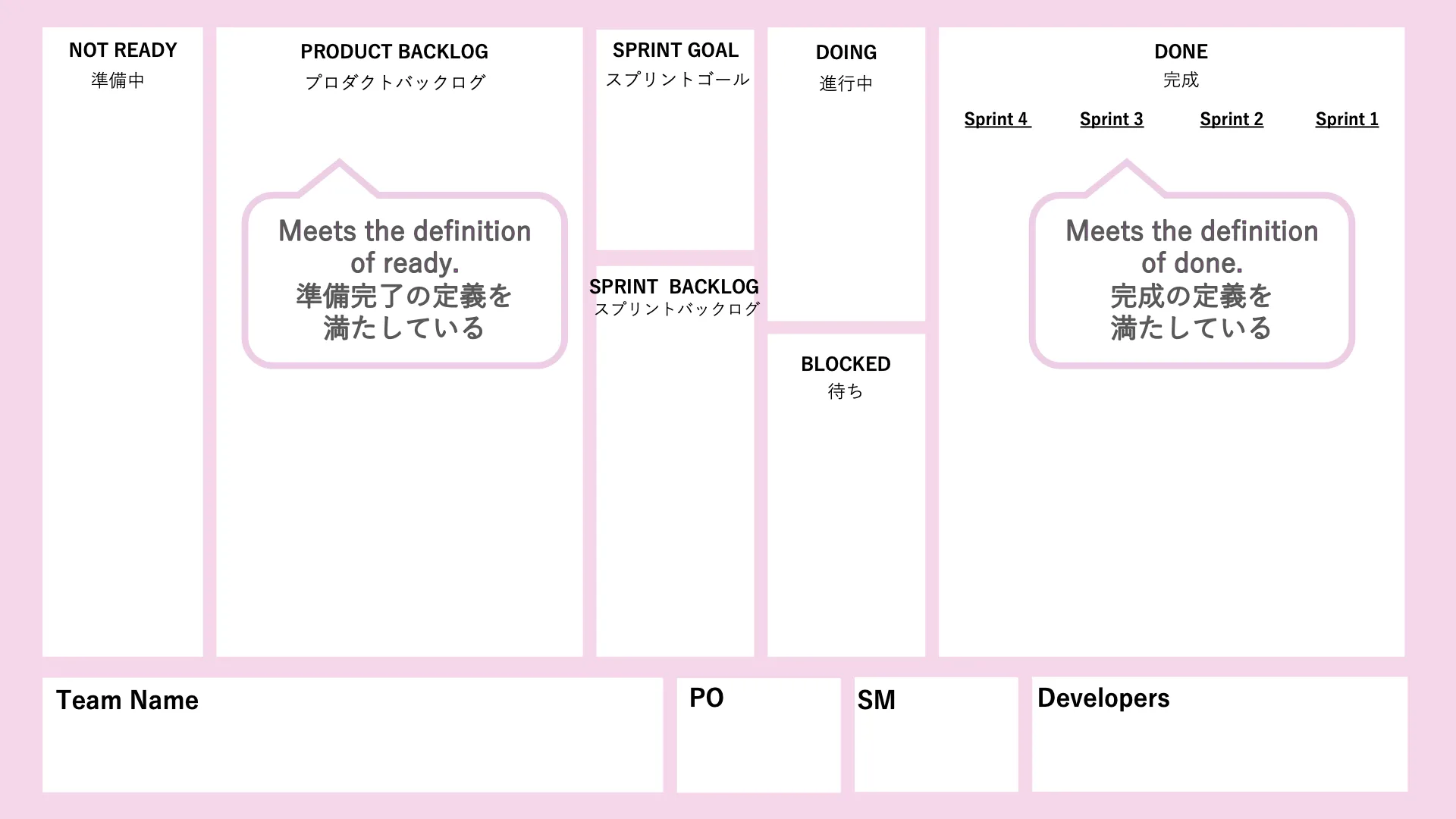What is Scrum? Easy-to-understand scrum development sprints, roles, etc. explained in 5 minutes
 Joe Justice
Joe JusticeFind out in this article
- What is scrum development? Understand concepts with simple explanations
- Understand the significance of using Scrum
- Can understand 3-5-3 of Scrum development
- How should Scrum be deployed in an organization? Get advice from Joe himself
What is Scrum? A brief explanation
Scrum is one .
Agile is a big concept that means agile development, and Scrum is one of the methods to achieve this.
Agile has multiple methods and ways of thinking.
Scrum is a simple framework consisting of 11 rules and is used by many companies around the world.
Scrum is a very good framework as a first step for your team to move to advanced agile.
Why Use Scrum? Purpose and significance of using Scrum
The main benefits of using Scrum are:
Faster time to release
In Scrum, instead of developing all functions at once, we divide the functions into pieces and develop and release them in stages. This means you don’t have to wait for the release until the entire project is complete. This helps reduce time to market .
risk reduction
Develop, test, and release in small units. During development, risks can be detected immediately and timely responses can be taken. This reduces the risk of project failure .
Improve productivity and reduce costs
Scrum is designed to drive the value of deliverables and reduce time spent on unnecessary features and unnecessary meetings. In addition, there are many opportunities for improvement through reflection, and productivity can be increased. These improve productivity and reduce unnecessary costs .
promote teamwork
By making small releases, it is easier to gain experience of success, which leads to an improvement in the morale of the members . Scrum also designs roles, responsibilities, and events to enhance collaboration within a team.
Events and deliverables described in the Scrum Alliance | What is 3-5-3 of Scrum development?


Three roles in Scrum
First,
I will explain the three roles of Scrum one by one.
- Product owner role
- Role of Scrum Master
- Developer role
Product owner role


The Product Owner is responsible for maximizing the value of the product. And you own the Product Backlog. This is a prioritized list of features and services.
Role of Scrum Master


The Scrum Master is responsible for facilitating the five Scrum events. Improve your team’s speed, happiness, and iteration to keep improving.
Developer role


A developer is anyone who does work. It is the members of the developer who complete the work.
Developers create and are responsible for the Sprint Backlog. The Sprint Backlog is a work list (task list) of how to complete the highest priority Product Backlog items.
5 events in scrum
- sprint
- sprint planning
- daily scrum
- sprint review
- Sprint retrospective
Let’s go through them one by one.
sprint


A sprint event is a short cycle of planning, testing and releasing. The duration of the sprint should be long enough for the release.
Some teams schedule 2-week sprints with no testing or releases, but that’s not a sprint. So a sprint is not just a period of time, but a period of time during which you can test and release. Some teams start with 90-day sprints and iterate to speed things up.
sprint planning


An event where developers plan to complete their highest priority backlog items within the duration of the sprint. It is a meeting to create a work plan on how to proceed with work.
daily scrum


The Daily Scrum is a 15 minute meeting to re-plan the work of the day. See what needs to be done next, what’s blocking your work, and help each other improve.
sprint review


An event to check the results of the sprint and optimize the next sprint. Ideally, a sprint review would see a customer actually using it.
Sprint retrospective


A Sprint Retrospective is an event designed to increase team psychological safety and increase team speed and happiness.
Check for improvements in the next sprint. These improvements can be implemented immediately or placed in the Product Backlog or Spring Backlog and prioritized.
The 3 Artifacts of Scrum Development
I will explain the third of “3-5-3”, the three deliverables.
The three deliverables refer to the following three items.
- product backlog
- Sprint backlog
- Increment
Now let’s get into the details.
product backlog


The Product Backlog is a list of sprint-sized projects, products, and services. (feature list)
are prioritized and shared between those who do the work and those who request the work.
Sprint backlog


The Sprint Backlog is a work list for developers to complete the highest priority Product Backlog items within the duration of the Sprint. (Task List)
At the end of the sprint, the item must meet the definition of done and acceptance criteria.
(shippable) increment


An item completed in a sprint, which can be a ready-to-use project, product, or service. Deliverables, deliverables.
Scrum accessories in scrum


NOT READY column
You can review future work in the column or list just to the left of the Product Backlog.
refinement
It is the product owner’s responsibility, but it is an activity that everyone participates in. Review items in preparation and prioritize the product backlog. That product backlog must meet the definition of ready.
DEFINITION OF READY
Criteria to determine if the project is ready to invest and start development (has all the information to start development, is sized to be completed in a sprint, etc.)
DEFINITION OF DONE
A test or condition that determines that a project has met quality and is complete. All completed work must meet its defined quality standards.
Wait (BLOCKED)
A place to put work waiting for external dependencies, such as another team or vendor, or a robotic process outside the control of your team.
Completion (completed) column
Where to place completed items for each sprint. Meets the definition of done and shows what was completed in each past sprint.
sprint burndown chart
A timeline showing what items have met the definition of done and when they were done. A sprint burndown chart can answer the question of when a particular item will be completed.
For new projects or when you want to expand the scope, you may also use a burnup chart.


release burndown chart
A timeline that shows the trend of work on the larger product for each sprint combined. For example, a car has thousands of parts. For example, if a team completes an average of 20 parts per sprint, the release burndown chart aggregates multiple sprints to show when all parts for that car are completed.
Delegation of authority from leadership to team-based in Scrum
A leader is responsible for managing the team.
Depending on the organization, you may be busy with many management and coordination tasks such as project progress management, budget management, coordination between teams, and personnel evaluation.
In this case, the leader can become the bottleneck of the team because the leader has a lot of work to do.
For example, teams may have to wait for leader approval, slowing productivity and responsiveness to change.
In Scrum, what was traditionally done by the leader is distributed to the team members and the members themselves do it.
Rather than the leader giving detailed instructions to the members, the team has its own authority and responsibility.
By delegating authority and responsibility to team members, team members become conscious of acting more autonomously, fostering a self-organizing team.
Impact of Scrum on Organizational Reform
In Scrum activities, there may be organizational issues that cannot be resolved within the Scrum team, such as team composition and insufficient delegation of authority.
But being aware of the problem is the first step. If you don’t notice the problem, you can’t solve it, so let’s start by finding the problem and facing it as a team.
To solve organizational problems, if you are a Scrum Master, you must first become a good Scrum Master.
Creating a success story in your own team or encouraging your direct manager to understand Scrum can help.
Tell me, Joe! Scrum development


We asked the Agile industry leader, Joe Justice, directly!
How can I get my organization to understand Scrum and promote adoption?
- How should Scrum be deployed in an organization?
-
It’s okay, don’t worry. By the time you are reading this article, you have already taken the first steps. Scrum is very nice, but like any other framework, there is no magic solution. Please start where you can. And try to be a coach so that your team and your boss can gradually understand the fun game of Scrum.
If you join our class, you may find many tips.
Scrum FAQ
- Does Scrum mean Agile? What’s the difference?
-
Scrum is one of the Agile development methodologies. Agile is a big concept that means agile development, and Scrum is one of the methods to achieve this. Agile has multiple methods and ways of thinking.
あわせて読みたい
 What is agile development? Easy-to-understand explanation of Agile The Agile development model was born in 2001 as a solution to the shortcomings of the waterfall development model. Agile development models adapt to bus…
What is agile development? Easy-to-understand explanation of Agile The Agile development model was born in 2001 as a solution to the shortcomings of the waterfall development model. Agile development models adapt to bus… - What is the role of the Product Owner in Scrum?
-
The Product Owner is responsible for setting the direction of Scrum development and maximizing the value of the product.
Create a “product backlog” with your team and customers so that Scrum development proceeds smoothly.あわせて読みたい
 What is a Product Owner? The Role, What to Do, and Necessary Skills With the increasing adoption of Scrum, Product Owners have also been gaining attention and demand in recent years. Product Owners are required to have the sk…
What is a Product Owner? The Role, What to Do, and Necessary Skills With the increasing adoption of Scrum, Product Owners have also been gaining attention and demand in recent years. Product Owners are required to have the sk… - What is the role of Scrum Master in Scrum
-
As an Agile coach, the Scrum Master coaches teams to understand and practice Agile. Our Trainer Joe likens Scrum to a game, Product Owners to referees, Scrum Masters to coaches, and developers to players.
あわせて読みたい
 What is a Scrum Master? Roles, things to do and differences from PM “Scrum is a game about speed and developer happiness. Scrum Masters teach business leaders and teams how to enjoy the game of Scrum.” This is the first messa…
What is a Scrum Master? Roles, things to do and differences from PM “Scrum is a game about speed and developer happiness. Scrum Masters teach business leaders and teams how to enjoy the game of Scrum.” This is the first messa… - What are User Stories that represent Product Back Items in Scrum?
-
A product backlog is a list of features or services to be developed. These are described as user stories.
A user story articulates how the feature you develop provides value from a persona’s perspective.
This helps the team understand why they are doing the work and what value it creates.
It helps you prioritize what to build next and what not to build because you understand the value to your persona. - What is planning poker in scrum development?
-
It is a game used for estimation. Scrum does not estimate work in hours or man-months.
The difficulty of the work and the effort size are estimated as points. At this time, using a numbered card to estimate how much that point is, the team makes an estimate as if playing a game. - Should Scrum release every sprint?
-
Something should be released every sprint. A sprint is not a simple timebox, it should be a series of work periods including testing and releasing.
- How to study scrum properly in scrum training?
-
The instructor in charge of our scrum training is Joe Justice,
We support the introduction of Scrum and develop agile human resources in more than 20 countries around the world.


You can learn global standard agile methods based on examples from various industries and industries.
In addition to teaching the Scrum framework, we also provide training from the perspective of using Scrum to make your business successful.
CSM course from Joe Justice

 あわせて読みたい
あわせて読みたい
 Recommendations for Agile and Scrum training In the field where agile development is introduced, what kind of agile training should be taken to acquire sufficient skills as a leader and as a member? Whi…
Recommendations for Agile and Scrum training In the field where agile development is introduced, what kind of agile training should be taken to acquire sufficient skills as a leader and as a member? Whi…
The basics of the Scrum concept
Scrum is based on empiricism and lean thinking. Empiricism is the idea that knowledge comes from experience and that decisions are made based on observation. Lean thinking is the idea of eliminating waste and focusing on the essentials.
To achieve these goals, the three pillars of Scrum: transparency, inspection, and adaptation, and the five values of Scrum: commitment, courage, respect, openness, and focus. defined.
The three pillars of Scrum
Scrum is designed to achieve the three pillars of “transparency”, “inspection” and “adaptation”.
“Transparency” means being visible to both the person doing the work and the person receiving it. Shared processes and progress lead to faster and better decisions.
“Inspection” is the frequent inspection by teams of their work, progress, and processes to detect unwanted changes or problems. By inspecting, you can spot issues and adapt early.
“Adaptation” means optimizing a product, process, or other outcome. Adapt to change and continuously improve.
Five Scrum values
The five values of Scrum are Commitment, Courage, Respect, Openness and Focus.
Commitment means that the Scrum Team is committed to achieving its goals and supporting each other.
Courage means that Scrum team members have the courage to do the right thing and to tackle difficult problems.
Respect means that Scrum Team members respect each other as competent, independent individuals and are equally respected by those they work with.
Publishing means that “Scrum teams and stakeholders publish their work and issues.”
Concentration means that the Scrum Team concentrates on the work of the Sprint in order to make as much progress as possible towards the goal.
Achieving these values increases team motivation and psychological safety and contributes significantly to performance.
Scrum development summary
Scrum is a simple and easy-to-implement framework that consists of the 3-5-3 rule.
You can expect to improve speed and reduce risk because you proceed with development by dividing it into smaller parts.
In addition, teamwork and psychological safety are emphasized, which leads to increased motivation of team members.
They can also serve as a catalyst for organizational change.
If you want to practice agile development, I recommend trying scrum first.
コメント